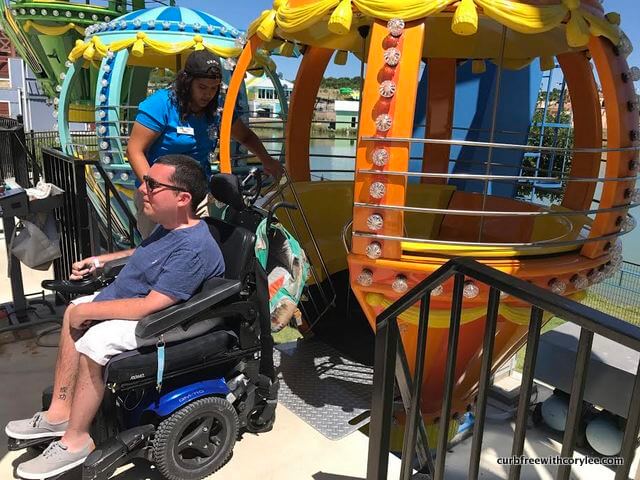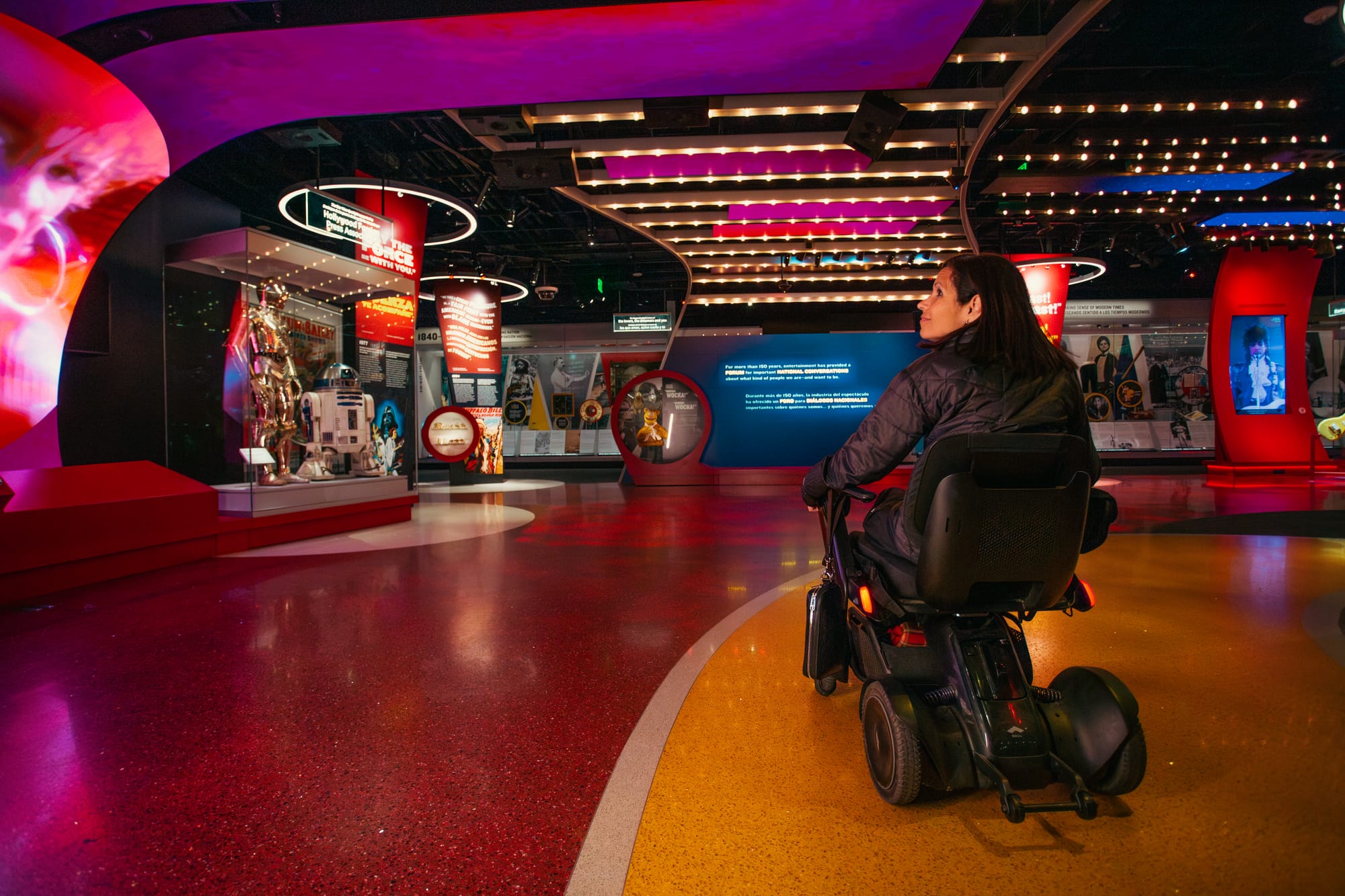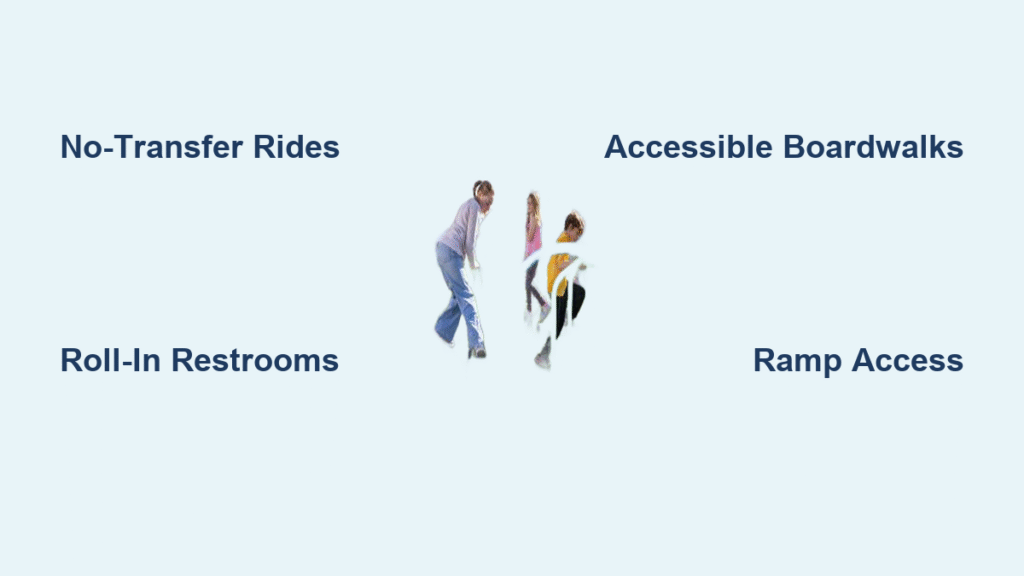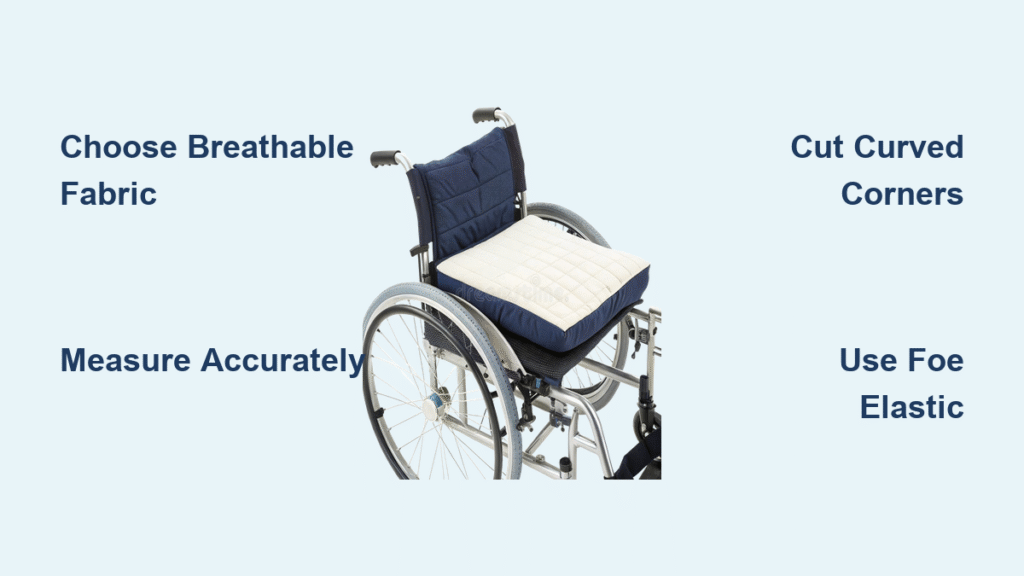Finding a family activity where your wheelchair-using adult can truly participate—not just observe—shouldn’t feel like solving a high-stakes puzzle. Yet too many “accessible” listings still mean awkward transfers, gravel paths that jam wheels, or “step-free” entrances that require climbing three stairs. The breakthrough? Across America, destinations have quietly redesigned experiences with adults in mind. No more childish play areas or segregated seating. From zero-transfer roller coasters where grandparents ride alongside teens to backcountry campgrounds with roll-in showers and staff who ferry coolers via ATV, you can now build itineraries where accessibility is baked in—not bolted on. Below, discover 50+ adult-focused activities verified for smooth surfaces, step-free entries, and genuine multi-generational fun.
Thrill Without Transfers: Theme Parks Where Wheelchairs Roll Right On

Skip the “accessible entrance” charade where you’re funneled to a separate queue. True inclusion means rolling straight onto rides alongside your family. At Morgan’s Wonderland in San Antonio, every attraction—from the high-speed train to the splash zone at Morgan’s Inspiration Island—accommodates wheelchairs without transfers. The secret weapon? Waterproof power-chair charging stations near the water park entrance so you never miss a wave. Pro tip: Visit midweek for shorter lines at the sensory-friendly arcade where pinball machines sit at wheelchair height.
How Disney’s DAS Actually Saves Hours (Without the App Headache)
Disney’s Disability Access Service (DAS) isn’t just for kids—it’s your golden ticket to avoiding hours-long physical waits. At Magic Kingdom, scan your DAS pass at the app kiosk, then enjoy nearby attractions while the system virtually queues your entire party. Key for adults: California Adventure’s Pixar Pier has the highest concentration of no-transfer rides (Guardians of the Galaxy, Incredicoaster) in a compact layout—perfect for half-day outings. Always request the ride accessibility guide at Guest Services for exact transfer details; many overlook that the Haunted Mansion’s “stretch room” elevator accommodates mobility devices.
Avoiding Universal’s Most Common Pitfall
Universal’s virtual queuing system requires same-day registration at Guest Services—but skip the 10 AM rush. Head straight to the Hogwarts Express platform at park opening for a same-day return time. Critical detail: The Diagon Alley section has cobblestone paths that jostle manual chairs; arrive early when surfaces are driest. For SeaWorld, book the Ride Accessibility Program (RAP) 48 hours ahead online—don’t wait for park entry. Their stadium seating guarantees front-row views without obstructed sightlines, so nobody misses Shamu’s splash zone.
Roll Through Wilderness: National Parks & Adaptive Water Sports That Welcome Wheelchairs
Forget “scenic overlooks” that require steep climbs. Real wilderness access means boardwalks you can navigate independently while your family fishes or takes photos. Yellowstone’s 1.2-mile Grand Prismatic Spring boardwalk has zero inclines, and visitor centers loan beach wheelchairs for shoreline access at Yellowstone Lake. Download the park’s 40-page accessibility guide before arrival—it pinpoints every roll-in restroom and overlook with bench seating. For quieter adventures, Michigan’s Lower Tahquamenon Falls features a 142-foot bridge with guardrails wide enough for side-by-side rolling and stroller pushing.
How to Kayak Without Upper-Body Strength
Adaptive kayaking isn’t just for athletes—it’s designed for limited mobility. Rochester’s Erie Canal program uses hydraulic hoists that lift your wheelchair straight into the kayak cockpit, no transfer needed. Staff handle gear transport and provide waterproof bags for phones. Book midweek for calmer waters; arrive 30 minutes early for the safety briefing where they’ll adjust footrests for your chair. At Siesta Key (ranked #1 U.S. beach), reserve a track chair 48 hours ahead via Sarasota County Parks—then roll straight onto rubber mobi-mats that extend to the waterline for taco-stand access.
Camping Without Compromise: Your Backcountry Checklist
John Dillon Park in New York’s Adirondacks proves wilderness isn’t off-limits. Rent a ramped lean-to (three-sided cabin) with nearby accessible bathrooms. Critical pre-trip move: Email staff 72 hours ahead to arrange ATV transport for coolers and camp chairs. Their 24/7 guest center keeps power chairs charged overnight for sunrise trail loops on barrier-free boardwalks. Always pack a portable charger—sites have electricity but outlets may be scarce.
Museums Without Barriers: Smithsonian-Level Culture for Multi-Generational Groups

Ditch the crowded weekend museum marathons. Adult-focused culture means wide aisles, tactile exhibits, and seating where grandparents can rest while teens explore. Washington D.C. remains the gold standard: Every Smithsonian museum—from Air & Space to the National Zoo—offers free wheelchairs at the door and elevators to every exhibit. Build a stress-free day: Morning pandas at the Zoo, lunch in the Sculpture Garden café (outdoor tables with chair space), then flight simulators at Air & Space where you board seated.
Avoiding the “Interactive Exhibit” Trap
Many museums tout “hands-on” displays that sit too high for wheelchair users. Rochester’s Strong Museum of Play nails it: Sesame Street sets at wheelchair height, 100 playable arcade games with lowered controls, and butterfly gardens with 60-inch-wide paths. Dallas’ Perot Museum avoids this pitfall with glass elevators that double as exhibits—ride them to the 5th-floor earthquake simulator where floor vibrations are felt through your chair. Always call ahead about tactile tours; George W. Bush Library in Dallas provides audio guides describing visual elements for low-vision visitors.
Brewery Tours That Actually Include Everyone
Skip the “tasting room” with three steps up. Genesee Brew House in Rochester offers free hourly tours (30 minutes) with ramps to fermentation tanks and high-top tables by windows overlooking High Falls. Staff seat your group together—kids get root-beer samples while adults try seasonal IPAs. Book Saturday afternoons for live music; avoid Friday nights when crowds spill into accessible pathways. Pro tip: Ask for the “behind-the-scenes” add-on—they’ll show you the original 1878 brewing kettles via elevator.
Game On: Wheelchair Basketball Drop-Ins and Baseball Games Where Grandparents Join the Dugout

Forget spectator-only sports. True inclusion means playing alongside your family. Most cities host weekly wheelchair basketball drop-ins where you borrow sport chairs and learn chair-handling drills. Rochester’s program pairs newbies with volunteer coaches for 20-minute mini-games—parents vs. teens on equal footing. No experience needed; staff adjust rules for mixed mobility levels. Arrive 15 minutes early for equipment fitting; bring grippy gloves to prevent blisters during pivots.
Baseball Games Where Grandparents Park in the Dugout
Webster, NY’s Miracle Field uses a cushioned rubber surface that absorbs wheels and strollers. Games run June–August with oversized dugouts so grandparents roll right beside grandkids. Future-proof your visit: Call ahead about “Buddy Ball” days where volunteers assist players with disabilities. Post-game, hit the accessible splash pad (opening 2024) for cool-down—no more watching from the bleachers.
Adaptive Skiing for Multi-Generational Trips
Michigan’s Challenge Mountain offers tandem sit-ski lessons where an instructor guides you down slopes—perfect when family members ski at different levels. Rentals include heated seats and adjustable footrests; sessions start at 90 minutes for beginners. Always book midweek for calmer slopes and personalized attention. Post-ski, warm up at lodge roll-under tables with hot cocoa—no struggling with standard-height counters.
Your Pre-Trip Checklist: Transportation Hacks and Lodging Shortcuts for Stress-Free Travel
Don’t let logistics derail your outing. Master these pre-trip moves to avoid last-minute scrambles.
Air Travel Without the Chair Anxiety
Southwest Airlines gate-checks manual chairs in the cabin when closet space allows—but it’s first-come, first-served. Board Group A by checking in exactly 24 hours before departure. For TSA, call TSA Cares (855-787-2227) 72 hours ahead for a dedicated escort through security; they’ll test you for explosives without requiring transfers. Never pack medical devices in checked luggage—keep them with you until the gate.
Lodging Shortlist: Rooms That Actually Work for Adults
Skip “accessible” rooms with misleading photos. The Strathallan in Rochester features king rooms that fold out to queen sleeper sofas (with 36-inch clearance for hoists), roll-in showers with fold-down benches, and pull-under sinks. At Disney resorts, specifically book “roll-in shower” rooms—standard accessible rooms may have tubs with seats. The Schoolhouse Hotel in West Virginia offers zero-entry rooms with launchpad access to trails; staff provide trail condition updates daily.
The Screenshot That Saves Your Trip
Activate Google Maps’ “Accessible Places” toggle and screenshot filtered results for restaurants and attractions. Pair this with Visit Mesa’s autism-certified itineraries—they include sunflower lanyards for invisible disabilities and exact bathroom dimensions. Always call venues 24 hours ahead: “Can I roll from the parking lot to the restroom without ramps?” If they hesitate, choose another spot.
Final Takeaway: Wheelchair friendly family activities for adults thrive when you prioritize destinations that design for adults first—not as an afterthought. Focus on venues with detailed accessibility guides (like Yellowstone’s 40-page manual), staff trained in mobility device protocols, and adult-oriented amenities like roll-under tables and companion restrooms. Bookmark the Michigan State Parks accessibility PDF or Arkansas’ trail specs for instant surface details. Remember: True inclusion means everyone shares the experience—not just the view from the sidelines. Start with one Morgan’s Wonderland-style destination this month, and watch your family’s adventure map expand beyond compromise.





